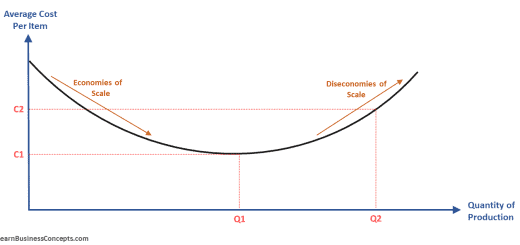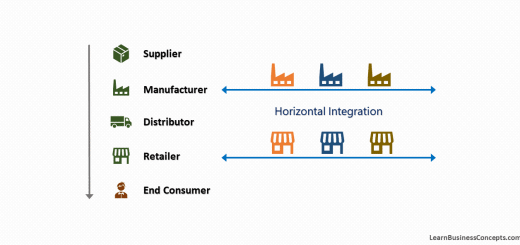Advantages and Disadvantages of Backward Integration
The company gains control of the business activities that were rearward of their value chain in the context of backward integration. In simple terms, backward integration is where the company acquires or starts another new company that supplies the products or services required to fulfill its manufacturing process.
Following are the Advantages and Disadvantages of Backward Integration,
Advantages (Pros / Positives / Benefits) of Backward Integration
1) Increase Barriers for the New Competition Entry
Backward integration equips companies the control over their supply network. This means the company can conduct sourcing and production both in their internal control. This will be difficult for the new competitors to compete with a company like this.
2) Improve the Competitive Advantage
Backward integration reduces the cost of distribution. The result is the improved competitive advantage for the company over their competitors. The main competitive advantage will be greater control over their supply network with less dependency on another external company.
3) Gain More Control of the Supply Network
Before the backward integration, the company has to rely on another company to purchase the required supplies. This will be an activity with less control because the supplies are done by a different company. But with backward integration, the company will have more power over its supply network with few external reliances.
4) Synergize Business Operations and Increase Profits
The greatest objective of backward integration is to increase the authority and ownership over the rearward of their value chain. This brings the company more command of its supply chain. The main advantage of this is to synergize the total operations to increase both revenue and profit.
5) Improve the Quality
With the backward integration, the company will be able to produce its raw materials. Businesses can achieve a better quality of the production of their raw materials through having less external quality impacts.
Disadvantages (Cons / Negatives / Drawbacks / Risks) of Backward Integration
1) Substantial Capital Requirements
Backward integration requires considerable finances. The main financial requirement is to acquire or merge with the company rearward of the value chain. Also, there will be cost implicated after backward integration to optimize the business operations.
2) Less Focus on the Original Business
After backward integration, management focus could shift to the new business, with losing focus on the original business. This will be a risk for the company because if the profitability of the original business operations could be loose then the entire synergies will collapse.
3) Synergis Realization Failure
Backward integration requires a significant level of synergies between the two companies. In certain situations, these synergies could be realized practically. This is the one of major risks and disadvantages of backward integration.
4) Human Capital Related Problems
There could be unforeseen human capital-related problems that occur after backward integration. Certain pressures from union associations can arise suddenly. There could be management decisions for the lay-off of existing employees. These activities could result in human capital issues.
5) Decrease in Business Flexibility
After the backward integration, the company should stick to the selected company for the purchasing. This could result in less flexibility since the external options are limited.
Recommended Articles:
- Vertical Integration


